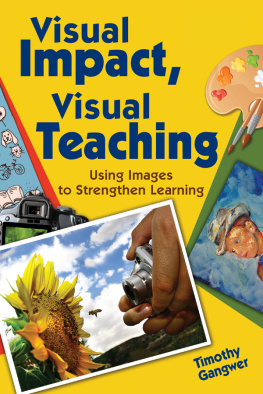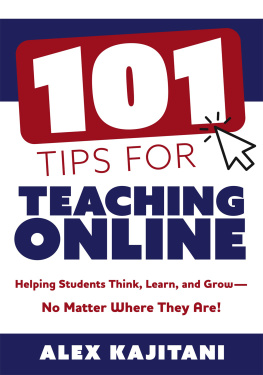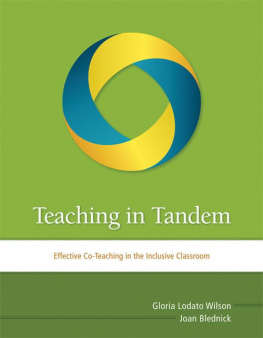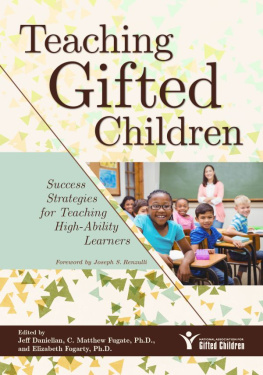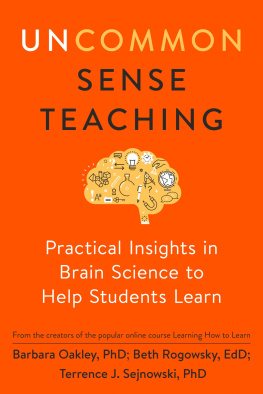
INCLUSIVE TEACHING: PRESENCE IN THE CLASSROOM
Cornell Thomas (ed.)
New Directions for Teaching and Learning, no. 140
Catherine M. Wehlburg, EditorinChief
Copyright 2014 Wiley Periodicals, Inc., A Wiley Company. All rights reserved. No part of this publication may be reproduced, stored in a retrieval system, or transmitted in any form or by any means, electronic, mechanical, photocopying, recording, scanning, or otherwise, except as permitted under Section 107 or 108 of the 1976 United States Copyright Act, without either the prior written permission of the Publisher or authorization through payment of the appropriate per-copy fee to the Copyright Clearance Center, 222 Rosewood Drive, Danvers, MA 01923, (978) 750-8400, fax (978) 646-8600. Requests to the Publisher for permission should be addressed to the Permissions Department, c/o John Wiley & Sons, Inc., 111 River St., Hoboken, NJ 07030; (201) 748-8789, fax (201) 748-6326, http://www.wiley.com/go/permissions.
Microfilm copies of issues and articles are available in 16 mm and 35 mm, as well as microfiche in 105 mm, through University Microfilms, Inc., 300 North Zeeb Road, Ann Arbor, MI 48106-1346.
NEW DIRECTIONS FOR TEACHING AND LEARNING (ISSN 0271-0633, electronic ISSN 1536-0768) is part of The Jossey-Bass Higher and Adult Education Series and is published quarterly by Wiley Subscription Services, Inc., A Wiley Company, at Jossey-Bass, One Montgomery Street, Suite 1200, San Francisco, CA 94104-4594. POSTMASTER: Send address changes to New Directions for Teaching and Learning, Jossey-Bass, One Montgomery Street, Suite 1200, San Francisco, CA 94104-4594.
New Directions for Teaching and Learning is indexed in CIJE: Current Index to Journals in Education (ERIC), Contents Pages in Education (T&F), Educational Research Abstracts Online (T&F), ERIC Database (Education Resources Information Center), Higher Education Abstracts (Claremont Graduate University), and SCOPUS (Elsevier).
INDIVIDUAL SUBSCRIPTION RATE (in USD): $89 per year US/Can/Mex, $113 rest of world; institutional subscription rate: $335 US, $375 Can/Mex, $409 rest of world. Single copy rate: $29. Electronic onlyall regions: $89 individual, $335 institutional; Print & ElectronicUS: $98 individual, $402 institutional; Print & ElectronicCan/Mex: $98 individual, $442 institutional; Print & Electronicrest of world: $122 individual, $476 institutional.
Cover design: Wiley
Cover Images: Lava 4 images | Shutterstock
EDITORIAL CORRESPONDENCE should be sent to the editor-in-chief, Catherine M. Wehlburg, .
www.josseybass.com
From the Series Editor
About This Publication
Since 1980, New Directions for Teaching and Learning (NDTL) has brought a unique blend of theory, research, and practice to leaders in postsecondary education. NDTL sourcebooks strive not only for solid substance but also for timeliness, compactness, and accessibility.
The series has four goals: to inform readers about current and future directions in teaching and learning in postsecondary education, to illuminate the context that shapes these new directions, to illustrate these new directions through examples from real settings, and to propose ways in which these new directions can be incorporated into still other settings.
This publication reflects the view that teaching deserves respect as a high form of scholarship. We believe that significant scholarship is conducted not only by researchers who report results of empirical investigations but also by practitioners who share disciplinary reflections about teaching. Contributors to NDTL approach questions of teaching and learning as seriously as they approach substantive questions in their own disciplines, and they deal not only with pedagogical issues but also with the intellectual and social context in which these issues arise. Authors deal on the one hand with theory and research and on the other with practice, and they translate from research and theory to practice and back again.
About This Volume
This volume focuses on the importance of inclusive teaching and the role faculty can play in helping students achieve by adjusting their approach to teaching by believing that each student has the ability to learn, though not necessarily in the same way. The authors in this volume embrace the ideals of inclusive teaching and believe that most, if not all, learners become actively engaged in their own learning in settings where inclusive teaching take place. Faculty today are faced with a much more diverse student body each year. While some colleges and universities address this trend by adjusting entry requirements, others do not have this option and this challenge must be met in the classroom by caring faculty who trust that all students can and will learn and that all students bring different aspects of their lives to the learning environment. To teach with a focus on inclusivity means that most, if not all, individuals want to learn, to improve their ability to better understand the world in which they live, and to be able to navigate their pathways of life.
Catherine M. Wehlburg
EditorinChief
In a real teaching and learning community of learners, the belief exists that all can and will learn, that the teacher has the ability to connect new information with the knowledge base of each student, and that students will become empowered to make their own connections. This premise is built on a foundation that sees each student as a unique human being with the ability to grow. They are not cloaked by some set of generalized characteristics. They are not invisible.
No Longer Invisible
Introduction
The thoughts presented in this chapter address the concerns many of us have concerning the academic preparation and acumen of learners matriculating to institutions of higher education.
A larger proportion of the population than ever before are participating in some form of postsecondary educationbut college access and completion remain inadequate for traditionally underserved groups, especially the poor, ethnic minorities, and older students. The increased share of college costs being borne by individuals, so far without a similar increase in financial aid for underserved groups or in improved public school preparation for them, continues this disparity. (Zusman 2005, 160)
Following is an exercise that will uncloak some of the perceptual barriers currently impeding our path leading to more student academic success. Once the reader immerses himself/herself in this exercise, it will become evident that I am proposing a different philosophical platform upon which we think, act, and teach. It is my hope that you embrace this new platform and help make it so.
As you read the chapter, you will see that I am suggesting that there are ways for educators to utilize certain teaching and learning techniques to improve the academic growth of these underserved students. These efforts will help increase both retention and graduation rates. I am also suggesting that teaching and learning environments that help learners to connect their personal knowledge with the information we want them to learn have the potential to dramatically increase student success.
The concept of inquiry learning will be briefly examined to illustrate one method that will increase students academic growth. This concept will then be paired with Parker Palmer's (2011, 4445) five habits of the heart:
- We must understand that we are all in this together.
- We must develop an appreciation of the value of otherness.
- We must cultivate the ability to hold tension in life-giving ways.
Next page

